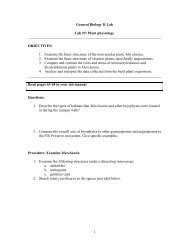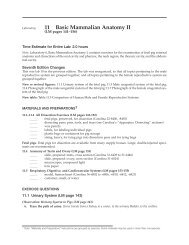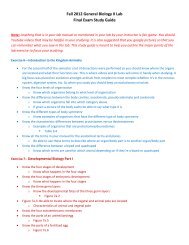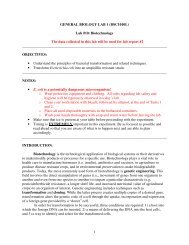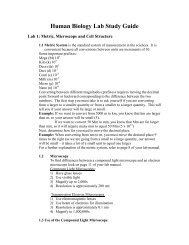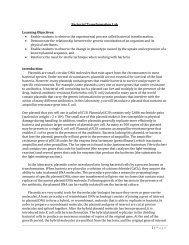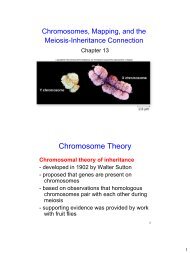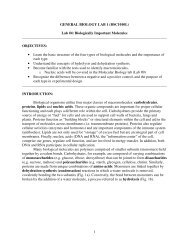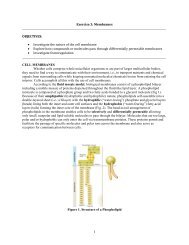Lab #7: Introduction to the Kingdom Animalia Objectives: 1 ...
Lab #7: Introduction to the Kingdom Animalia Objectives: 1 ...
Lab #7: Introduction to the Kingdom Animalia Objectives: 1 ...
You also want an ePaper? Increase the reach of your titles
YUMPU automatically turns print PDFs into web optimized ePapers that Google loves.
Task 2: Differences between acoelomate and coelomate organisms<br />
A major developmental event in bilaterally symmetrical organisms (see below) was <strong>the</strong><br />
development of a fluid filled cavity between <strong>the</strong> outer body wall and <strong>the</strong> gut (coelom). The<br />
coelom created a tube-within-tube arrangement allowing space for visceral organs and an<br />
increase in overall body size (Why). The coelom also provides support and aids in movement<br />
and burrowing in some animals. However, not all organisms are coelomates, some lack a coelom<br />
al<strong>to</strong>ge<strong>the</strong>r and are called acoelomate (a = without) while o<strong>the</strong>rs have a pseudocoelom (pseudo =<br />
false). Read page 413 (exercise 38) <strong>to</strong> learn more about <strong>the</strong>se organisms.<br />
Examine <strong>the</strong> animals listed in <strong>the</strong> table below and fill out <strong>the</strong> missing sections.<br />
Sample Organism Acoelomate Pseudocoelomate<br />
Coelomate<br />
(p. 402)<br />
(p. 409)<br />
(p. 421)<br />
Phylum Platyhelmin<strong>the</strong>s Nema<strong>to</strong>da Annelida<br />
Genus Dugesia Ascaris Lumbricus<br />
Common name Flatworms, planaria Roundworms Segmented worms,<br />
Earthworms<br />
Drawing of<br />
Cross section<br />
(slide)<br />
If specimens are<br />
available, dissect<br />
<strong>the</strong>m<br />
longitudinally.<br />
Draw what you see.



